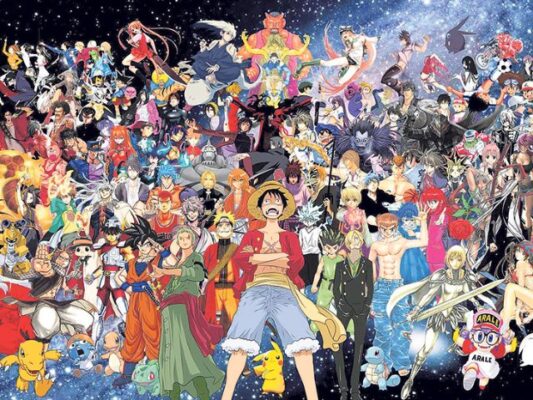Anime, a diverse and captivating form of animated entertainment originating from Japan, has gained immense popularity worldwide. While many embrace its unique storytelling and artistic styles, questions arise regarding its suitability for younger audiences. In this exploration, we delve into the multifaceted question: Is anime bad for children?
Contents
The Allure of Anime: A Global Phenomenon
Anime, characterized by its vibrant visuals, fantastical themes, and complex narratives, has become a global cultural phenomenon. From Studio Ghibli’s enchanting tales to action-packed series like “Naruto” and “Dragon Ball,” anime caters to a broad audience, transcending age barriers.

Positive Aspects of Anime for Children

Cultural Awareness
- Anime often incorporates aspects of Japanese culture, fostering a sense of global awareness and appreciation for diversity among young viewers.
Moral Lessons
- Many anime series convey valuable moral lessons and emphasize virtues such as friendship, perseverance, and compassion. Shows like “My Hero Academia” encourage positive values.
Creativity and Imagination
- Anime’s imaginative storytelling and visually stunning worlds stimulate creativity and imagination in children. Unique characters and fantastical settings can inspire young minds.
Diverse Genres
- Anime spans various genres, offering something for every taste. Whether it’s adventure, romance, or mystery, children can explore diverse storytelling styles and themes.
Concerns Surrounding Anime for Children

Violence and Intensity
- Some anime series feature intense scenes of violence or complex storylines that may not be suitable for very young children. Parents should carefully choose age-appropriate content.
Inappropriate Content
- Certain anime includes mature themes, fan service, or inappropriate humor. Parents need to be vigilant in selecting content that aligns with their family values.
Addictive Nature
- Binge-watching anime can become addictive, potentially affecting children’s study habits and sleep patterns. Setting reasonable viewing limits is essential.
Cultural Differences
- Cultural nuances in anime may be confusing or misunderstood by children. Parents can take the opportunity to discuss cultural diversity and clarify any misconceptions.

Age-Appropriate Content
- Utilize age ratings and parental guides to select anime suitable for your child’s age. Platforms like Crunchyroll and Funimation often provide content ratings.
Watch Together
- Co-viewing anime with your child allows for discussions about themes, characters, and any questions that may arise. It fosters an open dialogue about the content.
Set Limits
- Establishing screen time limits ensures that anime consumption doesn’t interfere with other essential aspects of a child’s life, such as academics and outdoor activities.
Encourage Critical Thinking
- Teach children to analyze and think critically about the content they consume. Discussing plot twists, character motivations, and consequences can enhance cognitive skills.
In the grand tapestry of entertainment options available to children today, anime stands out as a unique and influential medium. While concerns about its appropriateness for young viewers exist, the key lies in responsible viewing and guidance.
Anime has the potential to offer educational, moral, and imaginative benefits to children. By selecting age-appropriate content, actively engaging in discussions, and setting reasonable limits, parents can ensure that anime becomes a positive and enriching aspect of their child’s entertainment experience.
In essence, the question of whether anime is bad for children pivots on how it is integrated into a child’s life. With thoughtful guidance and involvement, anime can be a source of joy, learning, and shared experiences within the family dynamic.

